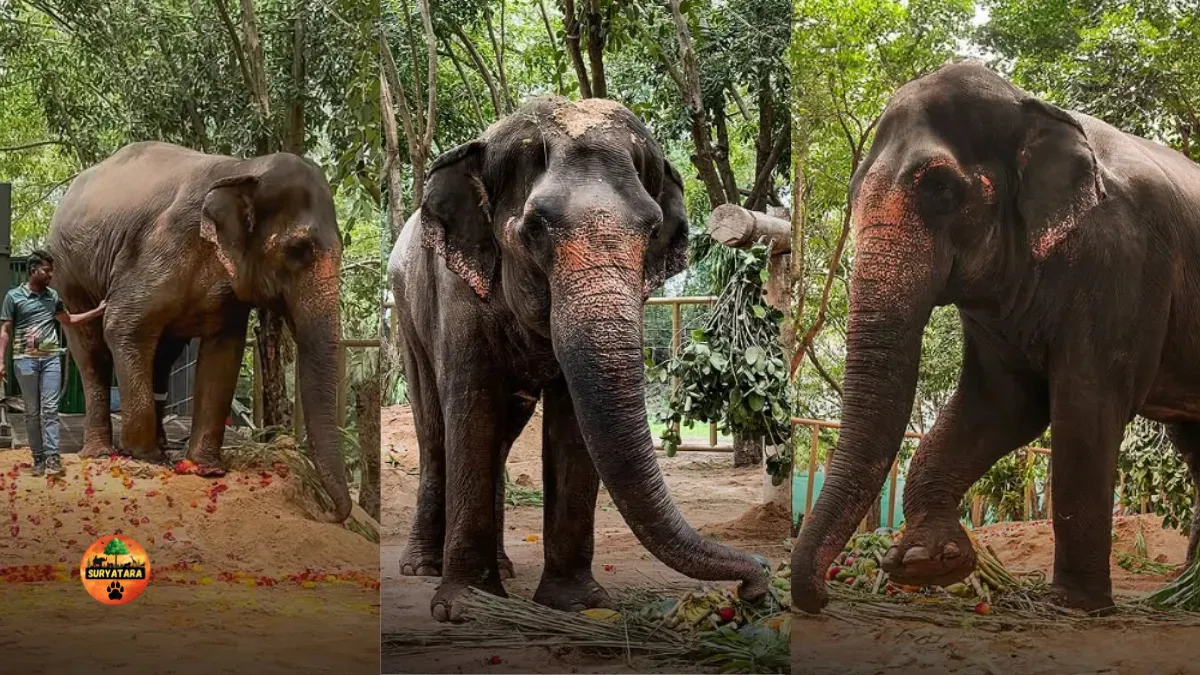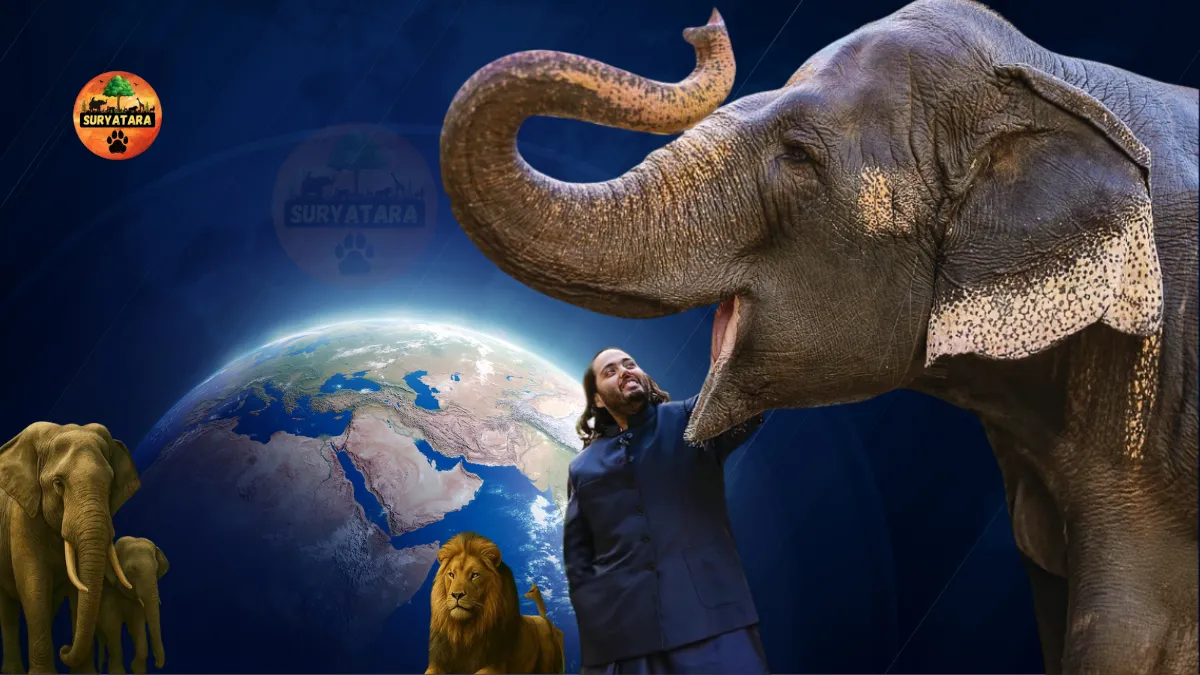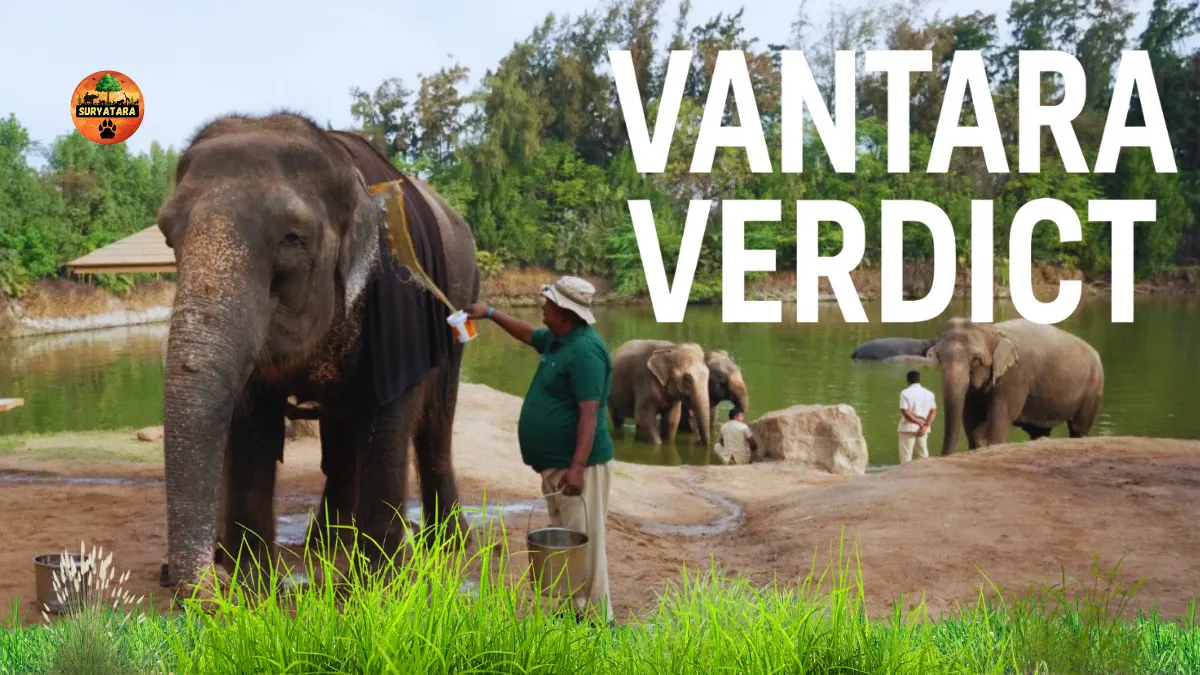Madhuri elephant, also known as Madhuri, has become the center of a deeply emotional and controversial issue in India, involving religious sentiment, legal intervention, and wildlife conservation. The 36-year-old female elephant was recently moved from a Jain monastery in Kolhapur, Maharashtra, to the Vantara wildlife rescue and rehabilitation centre in Jamnagar, Gujarat. This decision, backed by both the Bombay High Court and the Supreme Court, has sparked a public outcry and a complex conversation around elephant rehabilitation in India.
The Emotional Connect: Mahadevi and Kolhapur
For over 30 years, Mahadevi lived at the Shri Jinsen Bhattarak Pattacharya Mahaswami Jain math in Nandani village, Kolhapur district. Locals regarded her as more than just an elephant—she was a symbol of faith, tradition, and spiritual companionship. Reportedly brought to the monastery from Karnataka in 1992 at the age of three, Mahadevi became a part of daily rituals and religious ceremonies. Her presence was deeply woven into the cultural and emotional fabric of the community.
However, her long-term solitary confinement took a toll on her both physically and psychologically. Medical evaluations confirmed that Mahadevi suffered from foot rot, overgrown toenails, arthritis, and signs of stereotypic behaviour such as continuous head bobbing—clear indicators of stress and trauma.
Legal Intervention and the Vantara Transfer
The turning point came after a prominent NGO flagged Mahadevi’s deteriorating condition to the Maharashtra Forest Department and the Supreme Court-appointed High-Powered Committee (HPC). The Bombay High Court, after reviewing her medical condition and living circumstances, ordered that she be shifted to a more suitable environment where she could receive professional care.
On July 16, 2025, the Bombay High Court ruled that Mahadevi be moved to the Vantara Elephant Rescue Centre in Jamnagar. The Supreme Court later upheld this decision on July 25, effectively paving the way for her relocation.
The Vantara facility, owned and developed by Reliance Industries, is a sprawling 3,000-acre sanctuary that offers world-class veterinary care, hydrotherapy, and opportunities for socialization with other elephants. Vantara, which means “within the forest” in Sanskrit, is part of a large-scale conservation initiative to rescue, treat, and rehabilitate wild animals in distress.
Key Facts About Mahadevi’s Transfer
| Detail | Description |
|---|---|
| Elephant Name | Mahadevi (aka Madhuri) |
| Age | Approx. 36 years |
| Original Location | Jain math, Nandani, Kolhapur |
| New Location | Vantara Elephant Rescue, Jamnagar |
| Legal Decision | Bombay HC (July 16), SC (July 25) |
| Reason for Transfer | Health deterioration, psychological distress |
| Current Condition | Receiving treatment and social integration at Vantara |
Public Protest and Political Pushback
Mahadevi’s departure triggered a wave of protests across Kolhapur. Locals, including political leaders, demanded her return to the monastery. Maharashtra Minister Prakash Abitkar confirmed that efforts are underway to bring Mahadevi back. In a recent meeting held in Kolhapur, officials from Vantara reportedly expressed willingness to cooperate.
Several leaders, including BJP MP Dhananjay Mahadik and Shiv Sena MP Dhairyasheel Mane, are lobbying for central government intervention. Mahadik even submitted a memorandum to Union Environment Minister Bhupender Yadav, requesting that an affidavit be filed in the Supreme Court for Mahadevi’s return.
Interestingly, the public protest also took a digital twist. Many Kolhapur residents started porting out of Jio mobile services—a company under Reliance Industries, which owns Vantara—as a symbolic protest.
According to Congress MLC Satej Patil, over 1.25 lakh people have signed petitions demanding Mahadevi’s return, which will be sent to the President of India via speed post.
Vantara’s Perspective: A New Chapter for Mahadevi
While public sentiment favors Mahadevi’s return, the team at Vantara is taking careful steps to help her adapt. In an Instagram post, the center mentioned that their approach is not just about treatment but about understanding her needs, calming her anxieties, and ensuring she can live on her own terms.
“Step by step, at her pace, with the care and respect she truly deserves,” Vantara stated—offering a glimpse into their ethical and compassionate rehabilitation philosophy.
Experts believe that the presence of other elephants, access to open spaces, and therapeutic support are crucial for Mahadevi’s physical recovery and emotional healing.
Tradition vs. Welfare: The Bigger Question
The Madhuri elephant case raises a fundamental dilemma: Should emotional and religious attachment override animal welfare? Elephants are social, intelligent beings that require companionship and a natural habitat to thrive. Years of solitary confinement, even in the name of religion, can cause irreversible harm.
While the sentiments of the Kolhapur community are valid and understandable, experts argue that rehabilitation in a place like Vantara is in the best interest of the elephant.
This case also draws attention to the broader issues of animal rights in India, highlighting the need for better legal frameworks and public awareness. It is essential to strike a balance between cultural traditions and ethical responsibility.
Also read: Madhuri Gets a Grand Welcome at Vantara: A New Chapter for a Gentle Soul
Conclusion: What Lies Ahead for Mahadevi?
As things stand, Mahadevi is undergoing treatment and social integration at the Vantara Elephant Rescue Centre. The legal mandate supports her stay there, but political and public pressures continue to build for her return. Whether or not she is brought back to Kolhapur remains uncertain, but one thing is clear: Mahadevi’s story has ignited a nationwide debate about how India treats its temple animals and the future of captive elephants.
Her journey is no longer just about one elephant. It is about a society grappling with the responsibility of protecting voiceless beings, even when it challenges age-old traditions.










